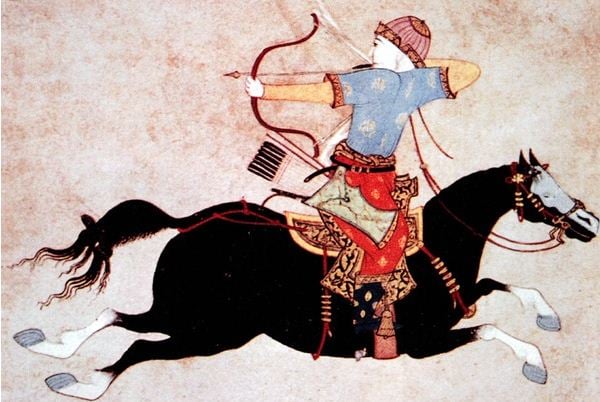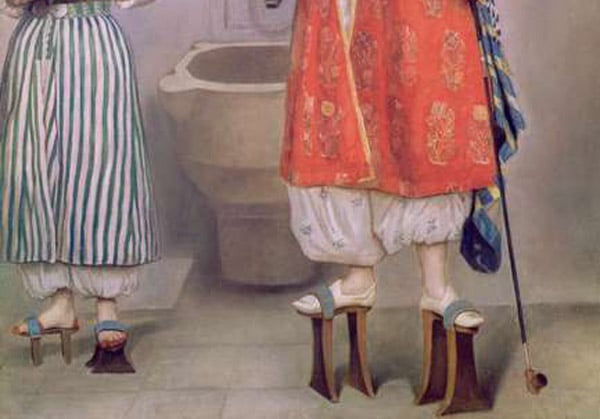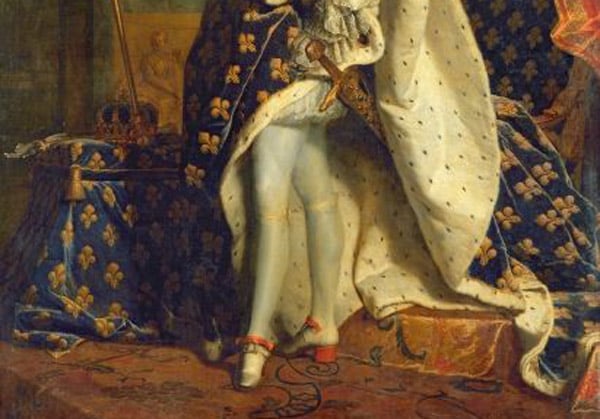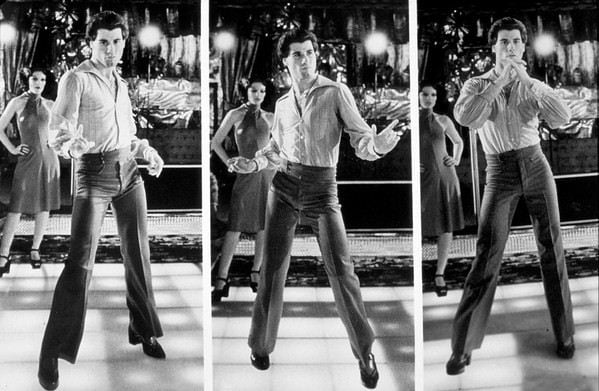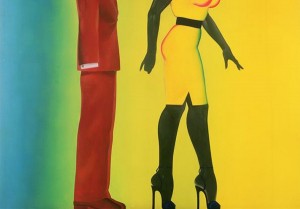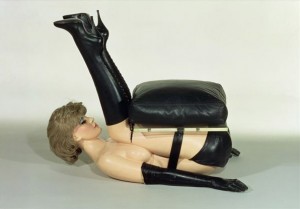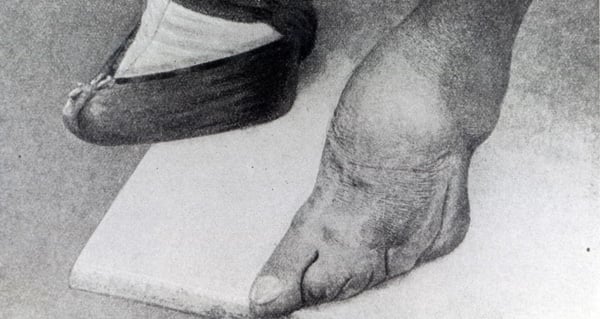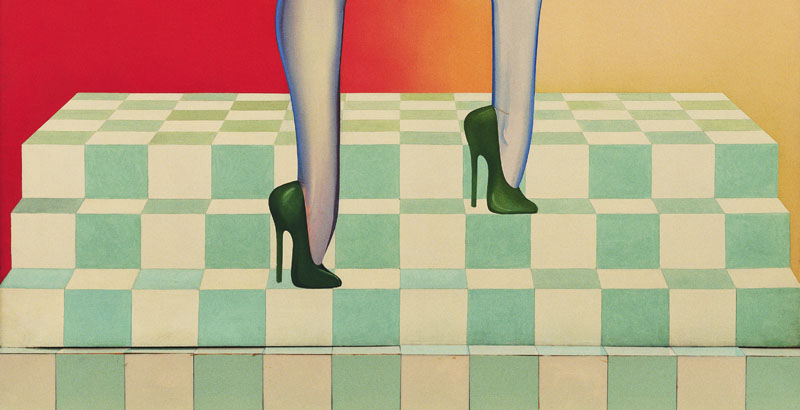
Stepping Out: A Curious History of Heels
You might think that heels are just glamorous (albeit impractical) fashion accessories for women, but they have much more cultural significance than you may realise. For centuries shoes have developed in their purpose, styles and transformative capacities, and with the latest advancements in footwear technology there’s no stopping their evolution.
Origins
Mongolia / China: A Mongol horseman with a composite bow, c. 13th century / Pictures From History
Although heels are now almost exclusively associated with women, they were actually introduced into fashion by men. Persian and Mongolian horsemen were among the first to wear a heel, as a means of keeping their feet from sliding out of their stirrups. They also helped to keep riders still when they needed to stand up and shoot arrows.
Even though new breeds of heels have been developed since then, shoes are still created for riding purposes today. American cowboy boots, first developed in the 19th century, also have high underslung heels to keep a rider’s foot from sliding through the stirrup.
Keeping Clean
Heels have other practical functions, and many societies across the world have used them to distance themselves from the dirty ground. Egyptian butchers, for example, would wear high heels to avoid directly stepping in offal.
Romans also wore cothurns or sandals with platform heels to lift them above the mud and rubbish in the streets. Geta, based on a similar concept, is still used in Japan today.
In 15th century Venice and Turkey, high shoes, or chopines, were again intended to protect the wearer’s dress from dirty streets.
Height of Power
Louis XIV in Royal Costume, 1701 (oil on canvas), Hyacinthe Francois Rigaud (1659-1743) / Louvre, Paris, France
After a while, chopines were adapted to become a fashion statement, and their height came to symbolise your social standing within society. They gradually grew larger in size until some even exceeded 30 inches in height! It’s no wonder that wearers were then required to carry a cane or bring a servant for support…
Pharaohs and nobles in Ancient Egypt too wore high heels to show power and for ceremonial purposes. Studies show that the taller you are, the more of a commanding presence you have, which is why women nowadays often wear heels in the office. In fact, female festival-goers were even barred from the red carpet at Cannes 2015 for not sporting heeled shoes.
17th century aristocracy wore heels particularly because they were impractical, as it helped to show off their privileged status. Louis XIV was a big fan of them as he was only 5ft 4in tall. These days men, such as Tom Cruise, would have to rely on insteps to appear taller!
Popular Culture
La fievre du samedi soir de John Badham avec John Travolta 1977 / Photo © RDA
Some individual styles of heels have a rich culture of their own. The two-inch Cuban heel is featured in many types of men’s boot, and derives its heritage from certain Latino roots, such as Flamenco dancing. They were first widely popularized however by The Beatles during their introduction to the United States.
Some believe that this saw the return of heeled footwear in men’s fashion during the 60s and 70s. John Travolta is seen here wearing Cuban heels in the opening scene of ‘Saturday Night Fever’.
Stilettos are no stranger to the female performance scene, but even male music figures like Elton John and Prince are known for occasionally wearing high heels as well.
In addition to helping project a star quality, shoes are long believed to have a transformative or mythical power. Who isn’t familiar with Cinderella’s glass slipper or Dorothy’s charmed ruby red shoes? At Bridgeman Images we have a selection of famous and special shoes in our archive, including those worn by Marilyn Monroe and Judy Garland in the Wizard of Oz.
Sexuality
Maid to Order III / 1972 by Allen Jones / Private Collection
Chair, 1969 by Allen Jones / Ludwig Forum fur Internationale Kunst, Aachen, Germany
The term ‘kinky boots’ was coined in the UK in the early 1960s when provocative high boots broke into mainstream female fashion. Originally they were calf-to knee-length leather boots with 4-5 inch heels and pointed toes.High heels are commonly thought to enhance the sexual appearance of a woman, by making her legs appear longer, by improving her posture or upright carriage and by making the lower legs more defined. Many shoes themselves appear to carry sexual connotations in mainstream culture, and women’s footwear is frequently advertised as being ‘sexy’. Some individuals even have a certain shoe fetishism.
Dare to Wear?
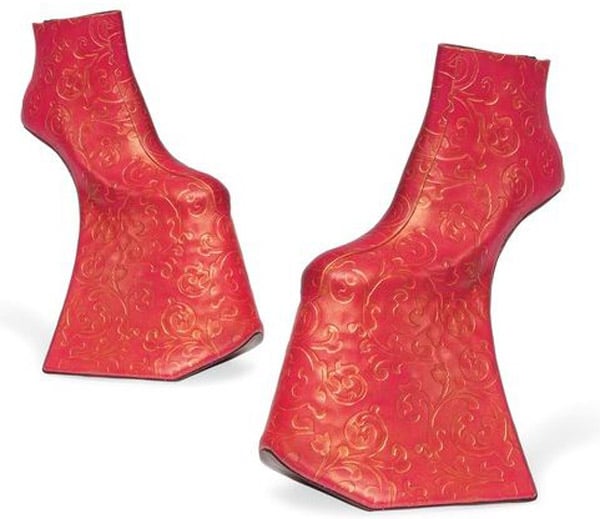
Pair of Lady Bell platform ankle boots / Noritaka Tatehana, probably autumn / winter 2010-11 (photo) . / Private Collection / Photo © Christie’s Images
Heels are already notorious for being difficult to wear, and yet designers are still trying to push the boundaries for how high or how excessive a shoe can be. In 1993, supermodel Naomi Campbell was famously brought to her knees on the catwalk of Paris Fashion Week by a pair of 10-inch Vivienne Westwood platforms. Nowadays, it is not too surprising to see Lady Gaga making public appearances in heels up to 24-inches!
Pain and Pleasure
Chinese woman’s feet / Chinese Photographer / Peter Newark Historical Pictures
Not only are heels difficult to walk in, but they also cause foot pain, deformities and increase the risk of sprains or fractures. When it comes to keeping our feet fashion forward, we spare no expenses.
Feet have long suffered to the fate of fashion, as evidenced by other harmful trends such as Chinese foot binding. This practice of breaking toes and binding feet to keep them small lasted over 1000 years and was thought to render the woman’s foot into an erotic shape of a crescent moon.
Find out More
Toronto’s Bata Shoe Museum is challenging preconceived notions of who wears heels and why in their display: Standing Tall, The Curious History of Men in Heels. Visit now until June 2016.
The V&A in London will be presenting around 200 pairs of shoes from around the globe, including those worn by Marilyn Monroe and Queen Victoria in Shoes: Pleasure & Pain. Visit from 13 June – 31 Jan 2016.
Images for Licensing
View more historical shoe images in the Bridgeman archive. Get in touch with the Bridgeman team on uksales@bridgemanimages.com with enquiries about licensing and clearing copyright.

